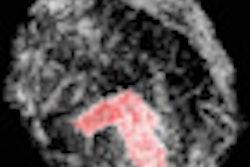Women in socioeconomically disadvantaged areas of Chicago were less likely to live near a mammography facility than women in more affluent areas, according to a study presented at the American Association for Cancer Research (AACR) meeting in San Diego.
Jenna Khan, a doctoral candidate at the University of Illinois at Chicago, and colleagues collaborated with the Metropolitan Chicago Breast Cancer Task Force to define an index of social disadvantage. They used the 2010 census tract data on the percentage of families below the poverty line, families receiving public cash assistance or food stamps, unemployed persons, and female-headed households with children. The team created an index of affluence based on the percentage of families with incomes of $100,000 or more, adults with at least a college education, and adults with white-collar jobs.
When compared with census tracts with more resources, socially disadvantaged tracts were less likely to be located near the following:
- Any mammography facility (47% versus 66%)
- Facilities designated as American College of Radiology-accredited Breast Imaging Centers of Excellence (BICOE) (7% versus 36%)
- Facilities offering diagnostic mammography (44% versus 52%)
- Facilities with at least one breast-imaging-dedicated radiologist (31% versus 60%)
- Facilities with digital machines (32% versus 53%)
Similarly, those tracts designated as less affluent were less likely to be located near any facility, BICOE-designated facilities, facilities that offer diagnostic mammography, facilities with at least one breast-imaging-dedicated radiologist, and facilities with digital machines.
The research was funded by the Susan G. Komen for the Cure Postbaccalaureate Training in Disparities Research Grant, awarded to the University of Illinois at Chicago.



















